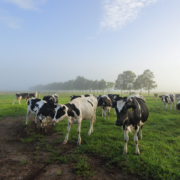We were delighted to receive this report from Johannes Meier, a regenerative farmer at Inverell, NSW. The study compared a range of pasture treatments and measured overall production, soil and plant health.
Report Abstract:
Research has shown that pasture soil health and productivity is decreasing worldwide while climate change is increasing the challenges of primary production for graziers. While many primary producers increase their use of chemical fertilizers to boost production, new research indicates that soil fertility is actually increased by soil microbial activity. Using a variety of soil amendments, we tested the hypothesis that applying living microbes plus chemical fertilizers to soil will best increase soil health and pasture production. Using 6 trial plots, various products and combinations of products were applied. Products included plant nutrients (fertilizers), and biological amendments: compost tea extract (a product containing soil microbes), and Converte (a microbe food and stimulant). Soil biology was tested at the start and end of the investigation, and the biomass produced was measured. Soil biology testing showed substantial ecological and financial benefits of biological amendments. Benefits of both products weakened when combined with plant nutrients, and plant nutrients alone were hardly better than the control. Pasture biomass production increased with plant nutrients on first cutting, while biological amendments increased production on second cutting. Further testing over a full growing season will provide more definitive data. The investigation demonstrated that Converte and compost tea extract increased soil biological activity and pasture productivity. Plant nutrients were of some initial value in increasing biomass production, but suppressed soil biological activity. Biological amendments are a cost effective, ecologically beneficial alternative to chemical fertilizers. Used correctly, these products could significantly increase the productivity and health of pasture lands worldwide.
Read Johannes’ full report here.




